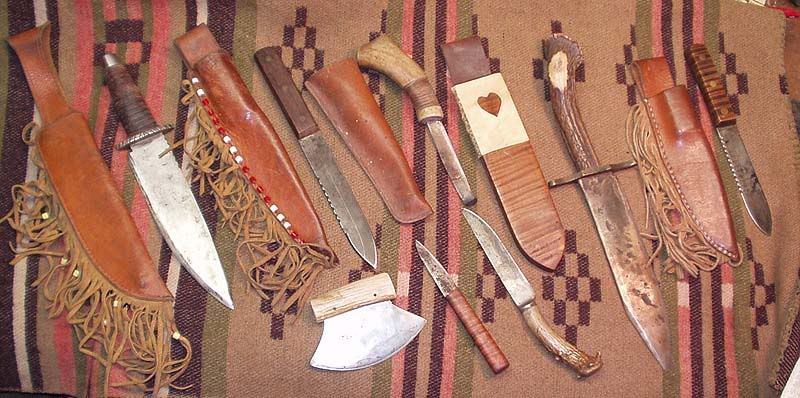My AK experience was that the Ulu is primarily a women's food prep knife, used mainly on fish. I saw them used in fish camp on salmon, and I've seen Inupiak use them on whale meat. But I'm not an Anthropologist (that would be my Wife), so I Googled it for more info. See
[url] http://archnet.asu.edu/archives/lithic/ulu/ulus.html[/url] for the full article
Historic Uses Of The Ulu -
Ulus have been used by historic Inuit and Indian groups across North America. Interpretations of similar prehistoric knives are, to a large degree derived by analogy from the way in which ulus have been used by these groups. Several ethnographic examples illustrate how for many Native American groups, the ulu's basic functions was that of a fish knife; this was especially true in regions where people relied heavily on seasonal fish runs. Swan (1870) described the use of a Halibut chopper by the Makah of the Northwest Coast. This ulu-like knife was used to slice fish in preparation for drying. The Ingalik of interior Alaska also used the ulu for this purpose (Osgood 1940). Tlingit women used a similar crescent knife to slit and clean salmon (Krause 1956).
The ulus were not reserved exclusively for cleaning and preparing fish. Birket-Smith cited the skill with which Greenland Eskimos and Aleuts butchered seals using ulos (Birket-Smith 1959). More recent, Oakes has described the present day use of moon- and triangular-shaped ulus by Inuits in the Artic Bay region to prepare seal skins to make Kamiks (boots) and other items of clothing (Oakes 1987; 1991). These ulus are used for both cutting and scraping operations. The Ingalik used small ulus to perform fine skin work (Osgood 1940). Athabascan Indians in Northern Alaska even used the woman's knife to prepare fish skins to make mukluks (Rooth 1971).
The ulus or woman's knives of the Ingalik consisted of stone blades ground to the desired size and hafted to a wooden handle, the most common form being a semilunar blade glued into a slot made in a wooden handle (Osgood 1940). Osgood noted that a rocking motion was employed with the heel of the blade doing the actual cutting. Although men generally made these knives, they were used almost exclusively by women.
Materials other than slate have also been used to manufacture women's knives. Along the Northwest Coast, large mussel shells were ground to form such knives (Drucker 1955). In fact, Drucker noted that slate was used where it was available, but that by historic times, the shell forms were much more common than those of slate (Drucker 1955; 1965). Among the Cooper Inuit, ulu blades were among tools hammered from native copper (Birket-Smith 1959; Morrison 1992). As new metals became available, some Nootka groups living on the Northwest Coast eventually made iron and steel copies of earlier ground-slate knives (Stewart 1977). Likewise, some Eskimo groups frequently used saw steel to make ulus (Anderson and Eells 1935). Some of these were hafted to ivory or wooden handles.







